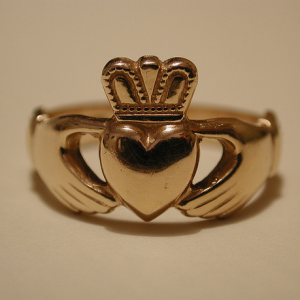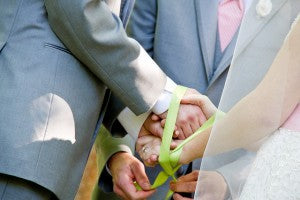Tax Day! Up To 50% OFF & 15% OFF Code: TAXDAY15 + Free Shipping |Track My Order
Luck Of The Irish Wedding
We've all heard of "the luck of the Irish," so it's apparent the Irish have some important traditions and superstitions they live by. Irish weddings are no different. Irish wedding traditions are as important today as they were hundreds of years ago. The Irish have certain customs and blessings that they include in their weddings that symbolize love, purity and romance. Many feel it's important to include heritage and meaning in weddings, and the Irish are no exception.
The Blue Dress
When you think of anything Irish, you may think of green. When you think of purity and weddings, you probably think of white. A traditional Irish bride will not wear a dress of either color to her wedding. Years before the British monarchy brought white to the forefront for the wedding gown color that symbolizes purity, brides wore blue dresses. To this day, a traditional Irish bride will wear a pale blue dress to symbolize her purity, although blue wedding gowns are a little harder to find these days.
The Claddagh Ring
The Claddagh ring, a ring made of two hands holding a heart with a royal crown, is a popular Irish symbol that represents love and the heart. Usually the Claddagh is one that is passed down from woman to woman within a family. A girl will start out wearing the ring facing outward on her right hand ring finger. If she starts down the path of a serious relationship and becomes unavailable to other suitors, she turns the ring around and wears it facing her body, so it represents her heart being captured. Once she is engaged, she will put the ring facing outward again on her left hand ring finger. On the wedding day, and usually incorporated into the wedding ceremony, the groom will turn the ring around on her finger indicating that she is permanently taken.
The Horseshoe
The legend of the horseshoe bringing good luck has been around for ages. Just as you would see them hung over doorways to bring good luck to homes, Irish brides have been known to incorporate a horseshoe into their weddings. Some Irish brides have a decorative horseshoe hanging in the décor at the wedding ceremony, hidden in their flowers, or carried down the aisle in a white satin bag, while others choose to wear the symbol it as a beautiful piece of silver jewelry or some other type of adornment.
The Handfasting
The Handfasting tradition used in traditional Irish wedding ceremonies is where we get the popular term "tying the knot." During the wedding ceremony, when the bride and groom have been officially proclaimed as one in marriage, they clasp their hands, and they are tied together with a decorative chord or rope. This symbolizes their unending partnership and love for each other.
Bells
The sound of a bell ringing is thought by the Irish to ward off evil spirits. Some brides choose to incorporate the bell ringing into their ceremony. After they say their vows to each other, they will ring the bell to symbolize safety for their marriage. Other ways traditional Irish brides incorporate this tradition is to have bells be given out at the reception and rung periodically throughout the celebration. Some brides choose to wear the bells as a charm on a bracelet or necklace. Many Irish couples are given bells as a wedding gift to be used whenever there is an argument. It is believed that you will rid your home of malicious spirits if you ring the bell after a disagreement.
Other Interesting Superstitions
When you think about the bride and groom leaving the reception, you probably think about bubbles, birdseed, or confetti being thrown. It is traditional in the Irish culture to throw an old man's shoe over the brides head. This way, she will have good luck... just be sure that it goes OVER her head! It is considered better luck for the Irish bride and groom to marry on any day other than Saturday. And make sure that no one in the bridal party comes in contact with a funeral procession, because this is very bad luck! Another bad omen is if a glass is broken during the bride's wedding day preparations, her ceremony, or her reception. A symbol of a lifelong friendship is when the mother of the groom breaks a piece of wedding cake on the bride's head once she has come back to her home after the ceremony. Of course, the groom should only do this after he's asked the bride's permission. The point is for the two to be friends afterward, not enemies!



